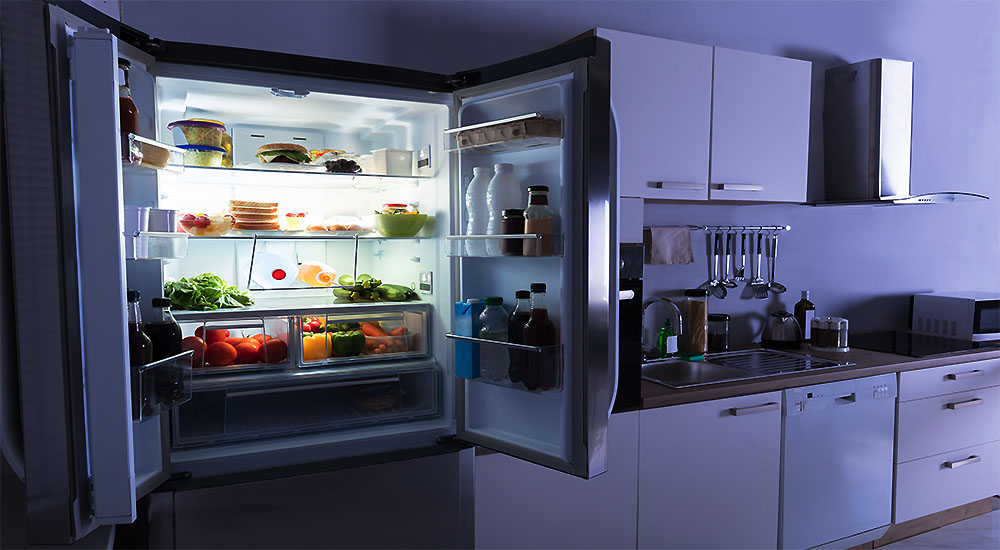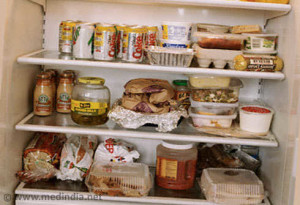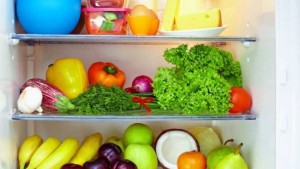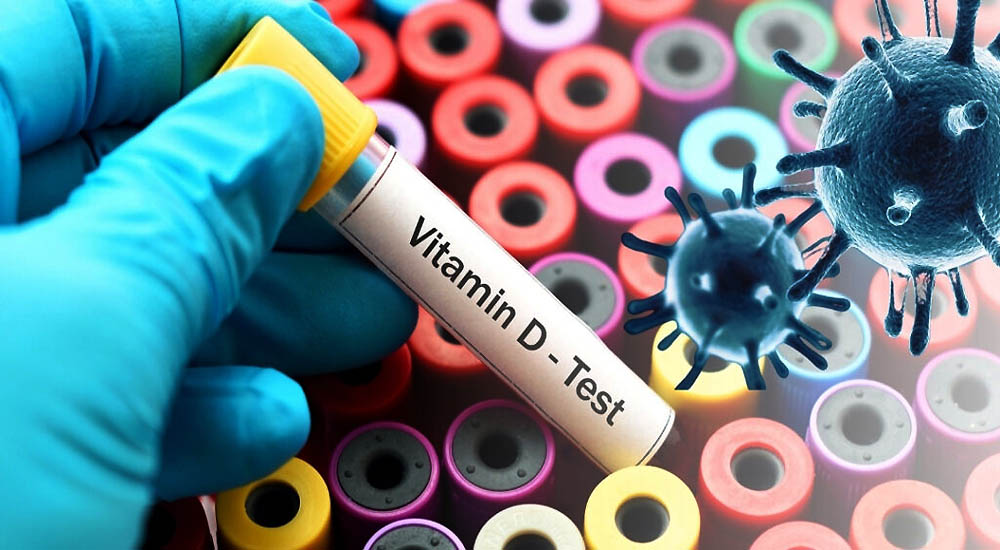Is Your Kitchen Killing You or Curing You?

Why Will You Likely be Disabled for the Last Decade of Life?

Reversing this dwindling spiral is well within our grasp! Read on and learn how. Results from a fascinating analysis were just released in a study published by the Journal of the American Medical Association. It is considered to be the most comprehensive analysis of the health status of Americans in more than fifteen years. It revealed that while Americans are living a bit longer than they were twenty years ago, but the number of years they are living with a chronic disability is on the rise – ten years, to be precise. Life expectancy is about seventy-eight, but for ten of those years, the average person is on short or long-term disability.
What Just Surpassed Smoking as the Leading Cause of Death?
I wanted to focus on a particular aspect of the report: The researchers found that poor dietary habits have overtaken smoking as the most important risk factor associated with years of life lost to disability and to premature death.
Sadly, this isn’t surprising – shocking perhaps but not surprising. A known toxin and carcinogen have actually taken a back seat to the Standard American Diet – abbreviation SAD – it IS sad! I never like to wallow in bad news for long, so let’s look at what we can do.
Don’t Worry, it’s Not All Bad News – Here’s the Good!
The good news in all this is that our diet is something that we DO have ultimate control over. No one is force-feeding you, right?
Yes, I understand that children are to some extent at the mercy of their parents, and that can be a problem, but for the rest of us, free will is present. There ARE cost factors and convenience factors, true, but when it comes to life expectancy and not being disabled in your later years, perhaps we could stand to be a bit inconvenienced and spend a bit more on our health.
So, let’s take a field trip – not too far – just to your own kitchen. You’re going to have to spend a bit of time at this, so relax, and let’s get to work.
The Answer is in Your Kitchen – Does it Make the Grade?
Is your kitchen nurturing you or annihilating you? Is your kitchen creating health or disease? If that sounds dramatic, believe me, it isn’t.
Open your refrigerator and let’s do an inventory:

What I’d like to see is at least 4 varieties of fruits and veggies, each.
As an example, if we were in my refrigerator right now, we’d see baby kale, cucumber, green onions, carrot, zucchini, cauliflower, red cabbage, and Brussels sprouts.
The fruits present are bananas, nectarines, oranges, lemons, avocado, strawberries, and blueberries – all are organic. (It looks a lot like the picture on the left, minus the piece of cheese.)
2. Beverages – is there fruit juice, soda, coffee creamer, milk, etc? What would get you a good grade is bottled water, organic orange juice (just for the morning smoothie), and an alternative to cow’s milk such as almond, rice, or coconut milk.
Read the labels – there really should be much on the ingredient list. Water is water, OJ should only contain organic oranges, and any alternative kinds of milk should also be of the plain variety such that the ingredient list is short.
In fact, those foods with no ingredients, e.g. kale, broccoli, blueberries, are typically your best choice.
3. Animal protein – are there cage-free eggs and perhaps some free-range, antibiotic-free, hormone-free meat?
If you have any pre-packaged meats and the ingredient list goes beyond, the meat itself, water, some spices, and salt – you shouldn’t be eating it!
Nor should you be eating anything that you cannot pronounce. This would include cold cuts and bacon.
4. Dairy products – as I mentioned in the beverages section, I’m not a fan of dairy products and my reasoning for this is soon to be presented in our new book.
But in the interim, we find that most of our patients benefit from a dairy-free diet. So if you see a lot of milk, cheese, cream cheese, sour cream, heavy cream, etc present, consider going without it for a month and see how you feel.
5. Oils and dressings – there are some dressings on the market that are pretty ‘clean’, but once again the proof is in the ingredient list and length. Most are a chemistry experiment with 10 or more ingredients, many of them preservatives.
Honestly, it is so easy to make an amazing salad dressing. A little olive oil (2 parts) and balsamic vinegar (1 part), a crushed garlic clove, and a little mustard, salt, and pepper to taste and you’re good to go. Plus, make enough for several days, refrigerate, and the taste only improves. Oils don’t typically need to be refrigerated; at least the best ones don’t.
Olive oil is great for salad dressings and putting on cooked food, but if you cook with it and go much above medium heat, you’ll need a different oil. For high heat, think about coconut oil, avocado, or walnut oil. If your pantry has corn oil, sunflower, safflower, or canola oil, consider substituting them in the future for the oils I just suggested.
Vegetable oils are heavily processed and full of omega-6s that tend to be pro-inflammatory. Definitely, something you want to avoid.
What about a ‘spread’? I’m not a fan of butter, so I recommend some ‘margarine’ such as Spectrum that are not hydrogenated and have fairly healthy oil ingredients. I avoid any with soy. They’re not perfect, but better than butter. You can also try a coconut spread; it’s an excellent fat and actually helps you to burn body fat.
6. Nuts and seeds – speaking of ‘spreads’ and fats, fresh nuts and seeds, preferably kept in the refrigerator or freezer to maintain their freshness, are a great source of good fat and protein.
If you have any nut butter such as peanut butter or almond butter, check the ingredients. There should be a very short ingredient list, e.g. peanuts, salt, and no presence of chemicals, preservatives, sugar, hydrogenated or trans fats.
7. Canned goods – Let’s go to the pantry for a moment. What do the canned goods consist of? Are there many pre-prepared chilis or soups? These may be fine, let’s just follow that ingredient rule: shortlist and all ‘real’ pronounceable ingredients. No trans fats, no chemicals, and no preservatives allowed, please.
8. Grains and starches – Are there many pre-packaged cookies, candy, crackers, chips, bread, etc in your pantry? Often these are overly refined grain products with a long list of ingredients, who are, therefore, not your friend.
You’d do better with a pure piece of dark chocolate and some herb tea for dessert than any cookie or cake that’s been pre-packaged.
When it comes to chips, occasionally, you can enjoy a potato chip (I wouldn’t recommend corn with over 90% of it being GMO) or other root vegetables such as taro, provided, once again, that the ingredient list is short and basic! Look for the chips made with olive or avocado oil.
9. Beans and legumes -Do you have any vegetarian proteins such as beans and legumes? If you have some canned beans, double-check the ingredients. Pure beans that have a limited ingredient list are great. They can be a nice addition to many veggie stir-frys or other dishes that need some protein.
Similarly, legumes such as lentils are a terrific source of protein with no worry of hormones, toxins, or antibiotics found in meat. Preparing these from scratch isn’t difficult either. I buy sprouted lentils in a package that takes just a few minutes to make.
Another vegetarian source of protein that’s very easy to use is Quorn chik’n tenders – you’ll find it in the frozen food area. It’s not chicken, but a mushroom protein. Quorn is the company name and I must warn you that if you are avoiding gluten, the ‘chik’n tenders’ are the ONLY product they have that is gluten-free.
But it is great and very easy to add to almost any dish – and yes, it does taste like chicken tenders! It’s completely cooked so all you have to do is heat it through.
10. Miscellaneous -What else is in your pantry? Pasta, marshmallows, chocolate chips? Follow the ingredient rule and just remember that the more refined the item and the longer the ingredient list, the more likely it will:
• Put weight on you
• Cause you to crave sugar
• Move you closer to heart disease, diabetes, cancer, and other degenerative diseases.
11. The Freezer – what do you see? Ice cream, other frozen desserts, hot dogs, frozen meals?
If you regularly buy frozen meals for yourself and your family, please take a moment to read the ingredients; you may be shocked. While I much prefer fresh, the good news is that there are some companies that have taken the time and care to create frozen meals with ‘real’ ingredients. You can find some examples in Trader Joe’s and Whole Foods Markets, but sadly, for the most part, the frozen fare is not what you want to put in your body. Did we cover everything? If not, at least you’re starting to get the idea.
It truly IS all about the quality and length of the ingredient list. Notice that I didn’t discuss the calories or fat content on the label. Why? Because it isn’t important. Avocado is high in fat and it’s wonderful for you. Coke has no fat and its pure poison. I also neglected to mention stimulants such as coffee and tea.
Coffee is quite addictive. If you can forego your daily consumption for several days and feel no ill effects, that’s likely fine, unless you suffer from fatigue. But if you miss a day and you are debilitated with a headache or complete loss of energy, seriously consider handling that addiction for good – it’s not your friend. I do like high-quality green and white tea – they have proven health benefits.
What about sugar and artificial sweeteners. If you have any artificial sweeteners in your kitchen, remove them. They are dangerous. A little honey is a great sweetener, as is maple syrup or dates when baking. And when it comes to old fashioned sugar, moderation is key, but I’ll take sugar over artificial sweeteners any day of the week.
Similar to caffeine though, if you crave sugar it’s time to look at seriously addressing that addiction. But don’t worry, it’s not hard. The beautiful part of ‘cleaning up your diet’ is that your sweet tooth makes an exit pretty quickly. So you don’t need to feel deprived or try to ignore that sugar monkey any more – he’s simply gone.
Making Positive Changes Step by Step
What was your kitchen-grade? Did you get an ‘A’ or an ‘F’? If it wasn’t an ‘A’, don’t beat yourself up. Just start by making some inroads in an area that you can confront. If stopping the diet soda is just too difficult to even contemplate, make other changes. All changes are good. Every month, go back and read this again. Make it a game to keep improving areas of your kitchen until your grade IS a solid ‘A’.
If your children or spouse start complaining, simply inform them that you love them and you want them to be healthy for a long time. Let them know that you’ve learned some new things and as a result are making some changes in the way the family eats. Believe me, they’ll thank you in the long run.
Optimum Health and Vitality are Well Within Our Grasp
To conclude with some additional findings from the study, Michael Roizen, chief wellness officer at the Cleveland Clinic in Ohio, said the results would put the US at a disadvantage in the global job market. Makes sense, who would want to work in a country where the food was killing them? His advice?
Improve our diet, eat less, exercise more, and quit smoking. He warned that “It’s a matter of us getting serious about this.” I agree! It may not be popular, or easy, but it is the truth. Your kitchen and what you choose to eat throughout the day is either creating disease or preventing it – the choice is yours.
Do you need help with your health?
We have the diagnostic and testing tools, the clinical experience, and a different medical approach to discovering the root cause of why you have the symptoms that are bothering you. As long as you are ready to make some dietary and lifestyle changes, we can help you. We will "hold your hand" through the changes, step by step, to make each step an easy one. We are located in Clearwater, FL, at 1000 S Ft Harrison, at the corner of Ft. Harrison Ave. and Magnolia St. There is plenty of parking space directly accessible from Ft Harrison. If it is not convenient for you to come to Root Cause Medical Clinic, we offer telehealth/telemedicine consultations to residents of certain states. Call us for details.
Contact us for a Consultation – Call 727-335-0400

Dr. Vikki Petersen DC. CCN
Founder of Root Cause Medical Clinic
Certified Functional Medicine Practitioner
Dr Vikki Petersen is a public speaker, author of two books, several eBooks and creates cutting edge content for her YouTube community. Dr Vikki is committed to bringing Root Cause Medicine and its unique approach to restoring health naturally to the world.
Ask a Doctor
Have a health concern you'd like to speak with a doctor about? Or just want clarity on a subject? Ask Us!


